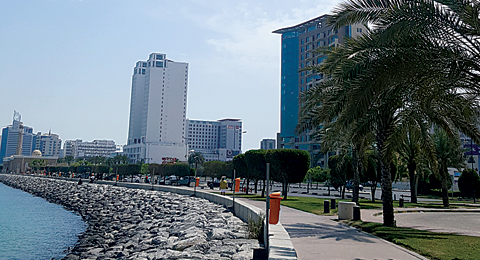MAZAR-I-SHARIF, Afghanistan: Alongside antique Qurans and ancient Afghan coins, rocket launchers and homemade bombs are displayed in a Mazar-i-Sharif museum as a testament to the Taleban’s victory over foreign soldiers. “It doesn’t have any old history, but it all played an important role in the victory,” says museum director Abdul Qayum Ansari. “This has exceptional meaning for the people.”
Inside the one-room Balkh province museum in northern Mazar-i-Sharif city’s famous Blue Mosque, twin display cases are devoted to mementos from the Taleban’s two-decade insurgency ending in 2021. Ansari insists it’s “forbidden to photograph or film” the displays, and says the AFP team visiting are the first journalists authorized to come “in more than two years”.
Surrounded by fragments of pottery and porcelain, a yellow barrel of explosives stands out alongside a red Honda motorbike encased in a glass box, propping up a rocket-propelled grenade launcher. The bike “was for transportation of the Mujahideen (fighters) during the war and combat”, while the weapon “was used against the war machines like tanks”, explains the bearded curator. A handful of Afghan men browse the relics. Afghan women are barred from visiting, having been banned by authorities from entering the Blue Mosque complex after the Taleban returned to power.
‘Our people must see it’
According to Ansari, the small portion of the museum given over to war objects “has the most visitors”. Taleban authorities “wanted this museum to be exceptional”, he says. “Many more rooms” could be filled with other wartime curios of interest to the public, he insists.
Antiquities from previous eras are sparse, however. While Mazar-i-Sharif is a historic crossroads with Central Asia, much of its heritage was plundered in Afghanistan’s cascading conflicts. Since surging back to power in August 2021, the Taleban government has commemorated the withdrawal of US forces and the rout of the foreign-backed government with military parades and poetry readings.
At the same time, they have been hungry for foreign diplomatic ties, and official recognition by other states. It is unclear why authorities have been reluctant to show off the small exhibition, but Ansari said he thinks it deserves to be seen widely. “From my personal point of view, pictures should be taken of it,” says Ansari. “All the world must see it, our people must see it.” “I have personally requested that we must have a special museum for the conquest and the victory,” he says. — AFP
 Hong Kong Bannar.jpg)








